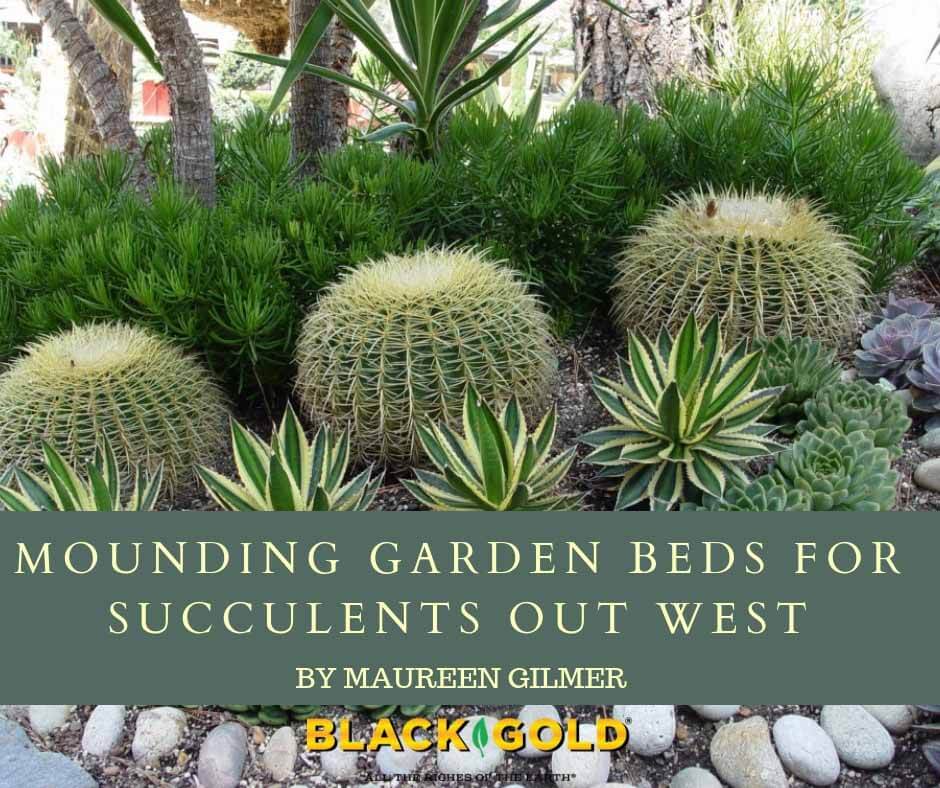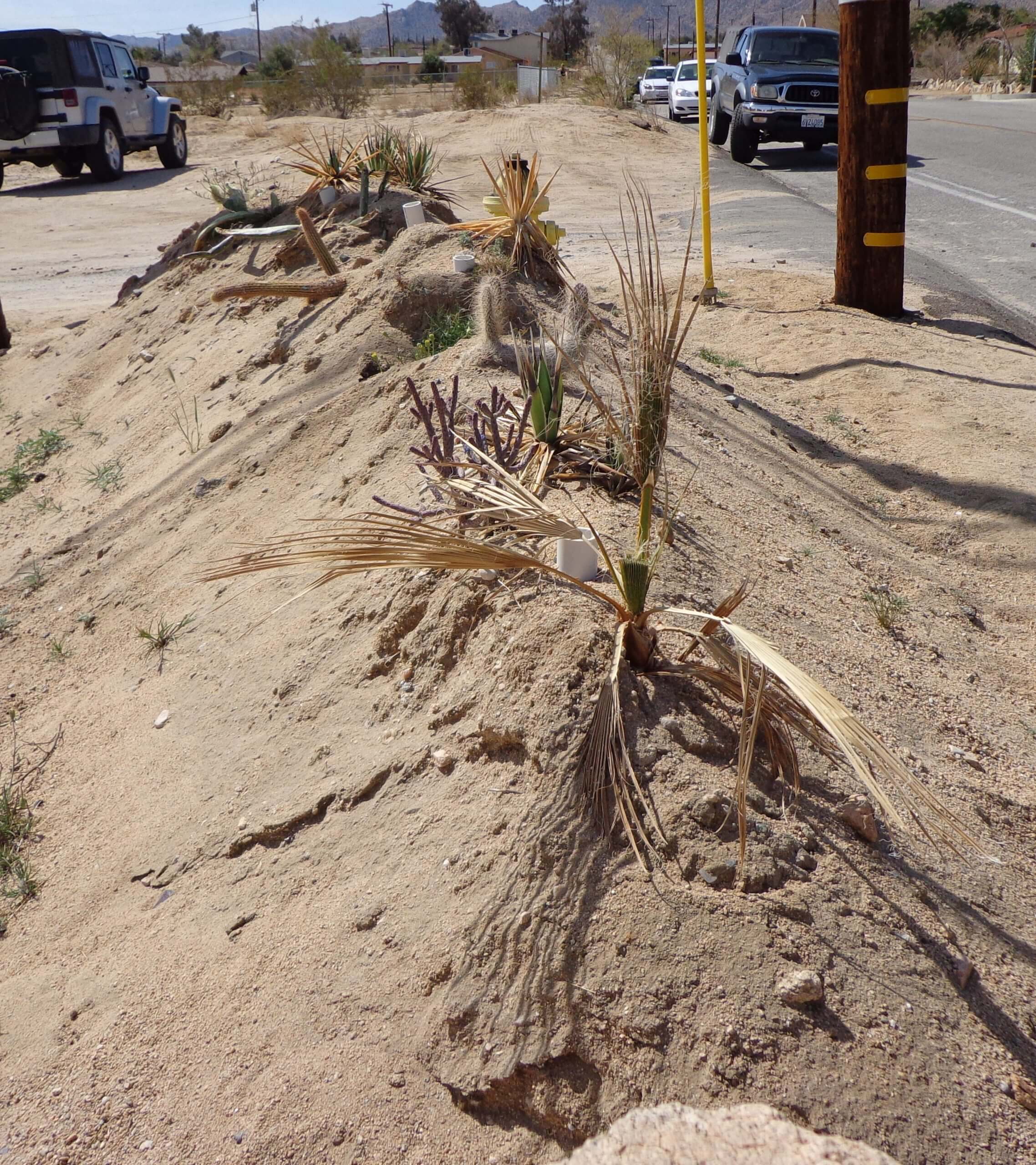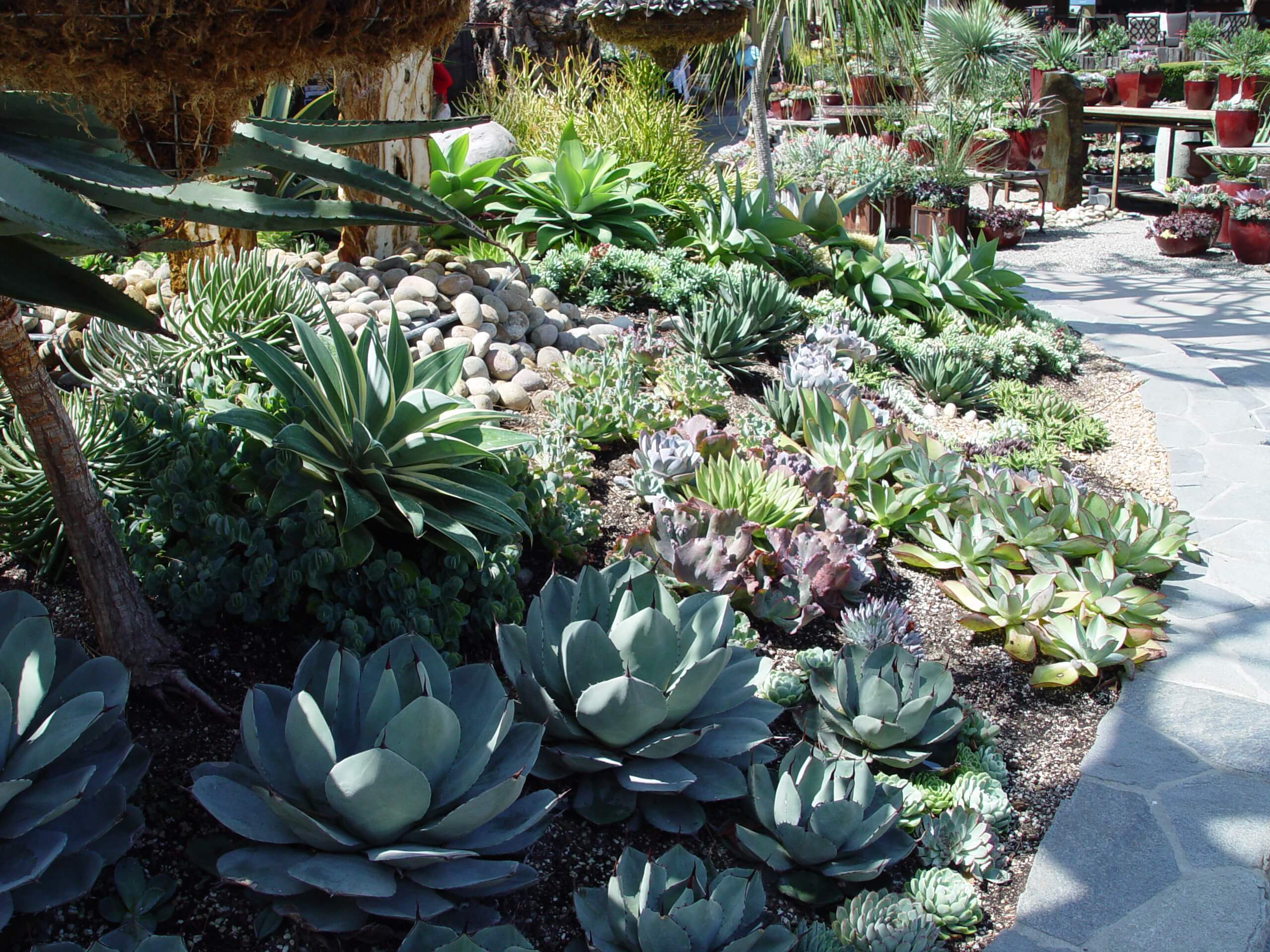
Love succulents but hate your clay soil? Solve it by creating a simple mound of quality soil that ensures your finicky succulents will be happy with perfect drainage. Under these conditions, your plants won’t suffer waterlogged roots, and rotting will be a thing of the past if you irrigate with a slow drip system.

Incorrectly constructed mounds become failures for a variety of reasons. Most importantly, the soil won’t stay put and soak in when you water, and improper irrigation can leave conditions way too dry, even for succulents. These problems are due to the shape of the mound; if made too steep on the sides, the water runs off before it can penetrate. Effective succulent mounds need to rise up gradually, provide that flat place on top, and drop down just as gently on the other side.
Sizing Your Mound With Math
A mound is composed of three plains: The upslope, a level zone along the top, and the downslope on the other side. How high you go is dictated by how much space is available. The slope is governed by the angle of repose, which for traditional plants must be no more than 30% if the water is to penetrate. That’s a one-foot “rise” in elevation for every three feet of length or “run”.
Example: 6′ upslope distance + 3′ top of mound + 6′ downslope distance = 15 linear feet

This equation limits the width of your hypothetical mound to 2 feet in height. Once you calculate its dimensions, do the same for the length. Then use length x width x height to find the overall volume of the proposed mound in cubic feet. The largest bag of Black Gold Moisture Supreme Container Mix contains 2 cubic feet of material, so either make the whole mound out of this mix or blend it 50-50 with natural soil. Aggregate can be added to increase drainage.
Grading Your Mound
Where soils aren’t heavy clay, the container mix is an extender and to better integrate local soil flora into the mound. Mix very well with a tiller or fork, then gently grade the mound into a graceful shape without broken curves or undulations. When grading out your mound, keep the soil damp and lightly compact the surface so it holds together. Use boulders where conditions are irregular or create fields of smaller attractive pebbles to hold ground or control runoff.
Succulent Planting Strategy

Water flows downhill picking up soil particles with speed. To keep this from happening plant against the direction of the water flow. (This is what wheat farmers do to minimize erosion; they align their planting rows perpendicular to the natural flow of water.) Use small, densely planted succulents for steeper spots then irrigate with micro-spray irrigation to allow roots to create a network better able to hold the slope. Larger succulents, like aloes, further guide runoff away from more vulnerable locations with a single drip emitter.
A mound for succulents doesn’t need to be as high as those for plants with deeper root systems. In most cases, they are fine with just one foot of elevation to keep plants and root crowns high and dry. When the mound is in and fully planted, finish it off with a fine layer of stone or pebble that blends in with your cobbles and boulders for a perfectly designed display garden you’ll be proud of.
